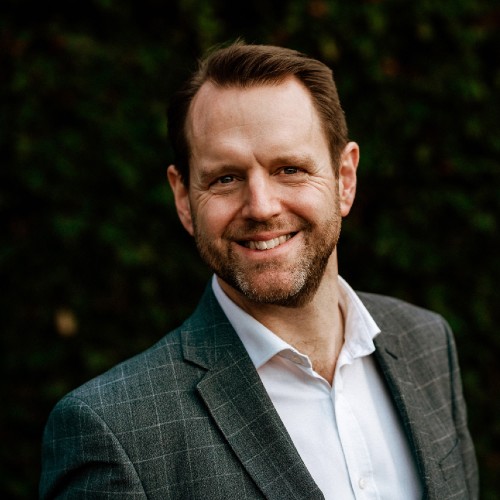Building resilience & mitigating risk: A Conversation with Andrew Stephenson
10 Jul, 20209 min
Andrew Stephenson is the Chief People Officer at Equiniti, a £556m UK FinTech. With 15 years of experience; previously working for Waterstones, Lookers, DFS and Vodaphone, Andrew has significant expertise in organisational development, change programmes, reward, talent and performance management. Teams under Andrews stewardship have won numerous awards, and in 2017 Andrew was awarded CHRO of the year for the EMEA region by HRO magazine.
Armstrong Craven welcomed Andrew to a recent webinar in collaboration where he spoke to Jon Salmon, our Global Client Partner.
During the webinar Andrew provided great observation on the talent storm, a topic that has been put into words by Armstrong Craven’s Head of Insight & Talent Analytics, Elizabeth Birrell, in her blog Is Your Business Ready for the Talent Storm?
Q: Given your HR leadership roles guarding two very different organisations through this crisis, how have you dealt with the immediate challenge and how do you see the role of HR in building resilience and mitigating risk?
AS: The two organisations are unbelievably different, my exec job at Waterstones, we have effectively hibernated the entire business. We had 92% of the organisation furloughed at one point and then we’ve brought it back to life and now have most of that working across the UK and Europe.
So, that compares to Citizens Advice where we had an explosion demand across all manner of topics, from health advise to benefits advice to job security advice to debt advice and our primary delivery mechanism for that advice was historically face to face, which certainly wasn’t available. So, two organisations and yet the challenges in many ways, when you look at it strategically, were actually very similar.
We would very often have very nice succession plans that would talk about who was your successor, and they would be available in three years, five years, seven years and you might have the odd one or two. The reality is that a reasonable number of senior and important people not available instantly because they were self-isolating.
Suddenly, you realise that plan is just clearly not fit for purpose and in the same way we did some clever things in tech and rolled out teams in 11 days, but you can’t just suddenly produce a new person to fill a gap, so that leads to a whole new thinking of how you manage your structures and whether you have much more people available to come through at different times and whether you have a much better understanding of who’s externally available within your organisation and how much you keep a market mapping up-to-date.
Fortunately, we were able to do things quite quickly, but again in both organisations, we’ve taken the opportunity to get on the front foot and to actually do some talent acquisition. Again, while the organisations are different, you find similar themes coming through.
The first one is clearly geography, while in senior roles it was very often acceptable to have some degree of remote working, it was always that some degree, and there was a desire to suck people into offices in central London very frequently. Suddenly you find that’s not entirely necessary and people can manage very effectively in this route. And as I’ve talked to lots of senior people, they’re saying ‘I’ve got no desire to go back to that world’. So, if you’re prepared to open your mindset geographically, you suddenly find there’s a very different pool of talent available.
Certainly, in one of my organisations we’ve been able to recruit a very senior tech person, who absolutely wouldn’t have considered a London-central job but was very able and very willing to do that job remotely from another part of the country. So suddenly, the organisations accessed a pool of talent that it couldn’t do before. I think that geography thing is really important, and it really ties to the flexible working agenda that’s gone on.
I think the other bits that are worth looking at, given those gaps in risk, is whether as you get higher do you have much more generic skill sets. If it is about coordination and leadership, do you have a much slimmer team at the top looking across a wider range of functions with more deeply rooted functional expertise sat underneath it? Again, that will be right for some businesses and wrong for others, but the key bit is, are you looking at it now? Because across the country and across all the countries we operate in, there is talent available now.
There is talent available either because it’s been displaced in an industry that’s moving on or because people are looking at how their organisation responded through this and is suddenly going ‘I’d quite like to be somewhere else’. When that talent’s becoming available first-mover advantage is absolutely the key.
So, we’ve seen the opportunity to go right, what is the right structure? What’s the pool of talent that we really weren’t considering before? How do we very quickly move to make that and how do we use that whole holistic process to mitigate risks for the sadly inevitable second and third waves of the current crisis?
Q: How do you see the skills and competencies required changing for senior and leadership roles?
AS: I think remote managing is very different and that’s something people have got to get used to and you’ve got to have greater degrees of trust than you’ve ever had before. You’ve got to be much more focused on output. None of this is new, this is all the things HR professionals and talent professionals have been saying for ages. The reality is it’s now happening, and it’s happening in front of your eyes, and if you try and manage people on the hours they’re in front of a computer, that really doesn’t work.
You’ve got to focus on what are people doing? How are they doing it? And what outputs are getting delivered? I think when you do that you suddenly find whole new ways you can restructure the whole organisation.
One of your guests talked about flying 45 minutes for board meetings. I think the alternative is where you don’t have a flight. I think just having a meeting that’s two, three hours long that’s filled with an inane periphery that you don’t need, that can go out of the window.
You can have much shorter, much sharper, much more managed sessions and through that, we found our line management can handle much more people which gives you, again, an entire debate on how you structure your organisation. Because if I’m no longer travelling and I’m doing shorter, sharper sessions, then you can be much more efficient from a management and leadership point of view.
The key bit to remember is that you don’t make it totally focused, so it’s certainly within my teams. It’s happened in many other organisations, we’ve got very deliberate social sessions in as well, and I certainly don’t want to turn it into forced fun, but actually, the team do have very social events that have been done virtually, and where people are in pockets they do get together, but it is that balance.
We found you can be considerably more efficient in your management than it was possible in the pre-COVID world. Taking that through into planning your talent is something people should be doing right now.
Q: To what extent does this opportunity to embed the talent pipelining practices tie into the increasing need for businesses to manage that leadership risk in a pandemic.
AS: Certainly, in the same way, that we would move people in internally, we’ve also moved people through the ranks. How you accelerate, that’s twofold. It’s one getting your organisation right from your talent point of view. It’s also a defensive position, other companies will be on the hunt for talent as well, and if you haven’t moved your people through the ranks, then they’ll be much easier to move on from another point of view. I think that the internal and external view is incredibly important.
Q: How have you gone about prioritising leadership roles that can now be fully remote? Is this now candidate interest and availability or is it from a business need?
AS: I think certainly in the organisations I’ve been in, this current crisis has proved that every function can be managed remotely. We’ve had big logistics warehouses, geographically spread retail organisations as well as office and I think your starting point has to be there’s no job that can’t be done remotely.
Now clearly there are people’s circumstances, lives and lots of factors as to why some people might want to be in the office, and that would work for candidates. I have seen no barrier to any job that they can’t be done until you get into frontline retail roles where you need to be in a store. But leadership and management across all of our functions have been able to be done remotely.
Q: How have businesses made sure talent still have a key hand on diversity in your talent pipeline?
AS: Given other things that are going on in the world and the particular focus on black lives matter, I can certainly speak for the organisations I’ve been in. EDI is more prevalent than it’s ever been as we make the talent acquisition that we’ve done through the business. So, I don’t think it’s flipped by if anything from a slightly unrelated reason it is massively accelerated.
Q: Are you doing anything to ensure that diversity is in the pipeline? Are you advancing that within your techniques and strategies?
AS: Absolutely. We’ve just relaunched our EDI policies and completely refreshed them, we’ve changed the way we collect data from our employees so that we know more than we’ve ever done before. And we’ve put certain stages into our processes that we didn’t have before.
One of the beauties, if there is any of this situation while we’ve been locked down, we’ve been able to take the time to refresh an awful lot of processes and procedures that would have taken us a very long time to do, and we’ve done it quite quickly. So, we’ve renewed our entire talent process and brought EDI much more prevalence than it was before.
This interview was just one part of our wider Talent Storm webinar, which included insightful conversations with experts across a variety of industries. To find out more about talent storm and why you should be preparing for it, take a look at the rest of our content. If you are looking for cost-effective in-depth talent intelligence services, then get in touch with our team today.
Speak with an expert
If you want to learn a little more about what we do and how talent research can help you make better-informed business decisions, our team of talent research and consulting specialists are happy to help.







